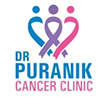Hepatobiliary Cancer
Introduction
Hepatobiliary cancers include malignant or cancerous tumors originating in the cells of the liver, bile ducts, and gallbladder. The hepatobiliary system refers to the liver, bile ducts and gallbladder. These organs are essential for digestion and serve as important processing points for food, medicine, vitamins, minerals and toxins.

Symptoms and Signs
- The typical presentation of a patient with hepatobiliary cancer depends on the site of origin. Patients with primary liver tumors, whether HCC or IHCC, frequently will complain of right upper abdominal or epigastric pain at presentation.8,39-41 The pain is usually dull but may be sharp and severe with end-stage disease. Rarely, patients with HCC will complain of a sudden, sharp, severe pain related to acute bleeding into the tumor or rupture of the tumor with intra-abdominal bleeding. The patient may also be aware of an abdominal mass or increased girth related to ascites. They can also present with jaundice.
- Cirrhosis is present in approximately 70% of patients with HCC.14 Occasionally, patients with known cirrhosis will be evaluated because of an unexplained clinical deterioration. Jaundice is unusual with primary liver tumors and may be obstructive because of tumor compression of the biliary system or hepatocellular because of end-stage hepatic replacement with tumor.
- In contrast to the primary liver tumours, patients with cholangiocarcinomas of the biliary hilum or distal biliary tree almost invariably present with jaundice.39,40 Abdominal pain and the nonspecific complaints of weight loss, anorexia, fatigue, fever, and night sweats are common in patients with either biliary or hepatic tumors. Patients with gallbladder cancer commonly complain of both abdominal pain and jaundice and may also have weight loss, anorexia, and fatigue but are usually undiagnosed before an attempted cholecystectomy.
- The most common physical finding in patients with primary hepatic tumours is hepatomegaly, which is frequently tender. The liver is often smooth but may be nodular as a result of tumor or cirrhosis. Occasionally, patients with HCC may have a hepatic bruit because of the highly vascular nature of the tumour. Ascites is a particularly ominous finding because it represents either hepatic dysfunction resulting from cirrhosis or tumour replacement, Budd-Chiari syndrome from the malignant invasion of the hepatic veins, or peritoneal spread of cancer.
- Patients with EHCC or gallbladder cancer are usually jaundiced but can also have hepatomegaly or simply tenderness in the right upper quadrant. Although a mass may be palpable, patients with gallbladder cancer are typically thought to have the benign disease until exploration and resection have been done.
Treatment (Bile Duct And Gall Bladder Cancer)
Three types of standard treatment are used:
Surgery
The following types of surgery are used to treat bile duct cancer:
- Removal of the bile duct: A surgical procedure to remove part of the bile duct if the tumour is small and in the bile duct only.
- Partial hepatectomy: A surgical procedure in which the part of the liver where cancer is found is removed.
- Whipple procedure: A surgical procedure in which the head of the pancreas, the gallbladder, part of the stomach, part of the small intestine, and the bile duct are removed.
Palliative procedures
The following types of palliative surgery may be done to relieve symptoms caused by a blocked bile duct and improve quality of life:
- Biliary bypass: If cancer is blocking the bile duct and bileis building up in the gallbladder, a biliary bypass may be done.
- Endoscopicstent placement
- Percutaneous transhepatic biliary drainage
Radiation therapy
Radiation therapy is a cancer treatment that uses high-energy x-rays or other types of radiation to kill cancer cells or keep them from growing. There are two types of radiation therapy:
- External radiation therapy uses a machine outside the body to send radiation toward the area of the body with cancer.
- Internal radiation therapy uses a radioactive substance sealed in needles, seeds, wires, or catheters that are placed directly into or near cancer.
External and internal radiation therapy is used to treat bile duct cancer.
Chemotherapy
Chemotherapy is a cancer treatment that uses drugs to stop the growth of cancer cells,
- New types of treatment are being tested in clinical trials.
- Liver transplant
- Targeted therapy
- Immunotherapy
- We, at Dr Puranik Cancer Clinic, offer the best Gall bladder and bile duct cancer treatment with all the latest treatment options being available like chemotherapy, targeted therapy, biological therapy and immunotherapy.
